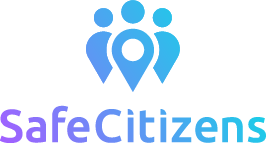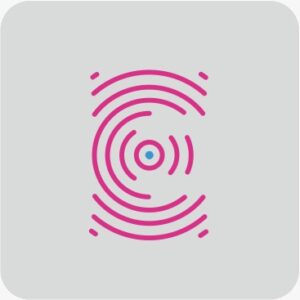At least 41 people have died due to flash floods and “cold lava” flowing from Mount Marapi on the Indonesian island of Sumatra. According to the BBC, heavy rainfall triggered the disaster, causing torrents of volcanic ash and rocks to sweep down the mountain. The resulting mudslides inundated two districts, destroying over 100 homes and public facilities.
Survivors recounted fleeing from the dangerous flow, with some using their mobile phones as torches in the pitch-black night. Seventeen people are still missing, and search efforts continue. Environmental experts highlight that such disasters are exacerbated by human activities like resource exploitation and unplanned development.
Technology plays a crucial role in predicting volcanic eruptions and other natural disasters. Volcanologists use advanced tools and techniques to monitor and study volcanoes. These technologies help provide early warnings and improve our understanding of volcanic behaviour, ultimately aiding in disaster preparedness and risk management.
How Does Tech Help Predict Natural Disasters?
Advances in technology have significantly enhanced our ability to predict natural disasters, providing critical data that helps mitigate their impact. By leveraging sophisticated monitoring systems and data analysis tools, scientists can now forecast events with great accuracy, enabling timely evacuations and preparations. These technologies play a crucial role in saving lives and reducing economic losses by offering early warnings and detailed insights into potential hazards.
Seismic Monitoring: Seismic activity is often a precursor to volcanic eruptions. Networks of seismometers around volcanoes detect and record earthquakes and ground movements, providing valuable data to predict potential eruptions.
Ground Deformation Monitoring: Technologies such as GPS and InSAR (Interferometric Synthetic Aperture Radar) are used to measure changes in the Earth’s surface. These changes can indicate magma movement beneath a volcano, helping predict eruptions.
Gas Emission Monitoring: Volcanologists measure gases like sulfur dioxide and carbon dioxide released by volcanoes. Increased emissions can signal rising magma and potential eruptions. Instruments like spectrometers and gas sensors are used for this purpose.
Thermal Imaging: Satellites and ground-based infrared cameras detect heat emissions from volcanic areas. Increased thermal activity can indicate magma nearing the surface.
More from Tech
- What Matters in a Penetration Testing Tool?
- How Are CRMs Shaping The Future Of B2B Sales?
- Typedef Launches with $5.5 Million in Seed Funding
- Sequent Tech Powered the Philippines’ Big Bet on Online Elections
- Crypto Clash: Coinbase Vs. Bitget
- Crypto Clash: Kraken Vs. KuCoin
- How We Should Be Creating Better Experiences For Young People On Social Media
- Yonder Launches Premium Rewards Debit Cards To Help More People Earn Meaningful Rewards
Tech In Volcanological Research
In the field of volcanology, researchers utilise leading technology to study and understand volcanic activity. These innovations allow for comprehensive monitoring and analysis, helping scientists to identify patterns and predict eruptions more effectively. The integration of advanced tools in volcanological research not only enhances our understanding of volcanic processes but also improves safety measures and disaster preparedness in vulnerable regions.
Remote Sensing: Satellite imagery and aerial photography provide large-scale views of volcanic regions. These images help in mapping volcanic features and monitoring changes over time.
Radars And Satellite Imaging: Synthetic Aperture Radar (SAR) and other satellite-based imaging technologies offer high-resolution images of volcanic landscapes. These images are crucial for monitoring ground deformation and volcanic activity.
Autonomous Robots And Drones: Drones and robotic systems can access hazardous areas around volcanoes, capturing real-time data and high-resolution images. They provide critical information without risking human lives.
Internet Of Things (IoT): IoT devices, including various sensors placed around volcanoes, continuously collect data on environmental conditions. This real-time data is essential for early warning systems and ongoing monitoring.
Smartphones And Social Media: Mobile technology allows for rapid dissemination of information. During a volcanic event, smartphones and social media platforms provide timely updates and facilitate communication between authorities and the public.
Challenges And Opportunity
While these technologies significantly enhance our ability to predict and manage natural disasters, they also come with challenges. High costs, the need for specialised knowledge, and the complexity of integrating various data sources are notable obstacles. However, the continuous advancement of technology holds the promise of overcoming these challenges, making disaster management more efficient and effective.
The integration of advanced technologies in predicting volcanic eruptions and managing natural disasters has transformed the field. Seismic monitoring, ground deformation analysis, gas emission tracking, thermal imaging, and remote sensing are among the key tools utilised by volcanologists.
Additionally, the use of autonomous robots, drones, IoT, and mobile technology enhances data collection and communication, ultimately contributing to better preparedness and response strategies. Despite the challenges, ongoing technological advancements are paving the way for more resilient disaster management practices.
Disaster Response Startups
Disaster response startups are playing a crucial role in alleviating the suffering and damage caused by natural disasters. By leveraging leading technology and agile solutions, these startups enhance preparedness and response efforts, ultimately saving lives and reducing the impact of catastrophic events. Their contributions are indispensable in the ongoing battle against the devastating effects of natural disasters.
Previsico

Previsico is a global company focused on mitigating the impact of flooding through advanced forecasting technology. Founded as a spin-out from Loughborough University, the company leverages innovative flood modeling software to provide accurate flood warnings and forecasts.
With offices in the UK, USA, and Hong Kong, Previsico serves a diverse range of clients, including insurance companies, utilities, and local councils, helping over 200 customers manage and reduce their flood risk effectively.
Safe-Citizens

Safe-Citizens is a public safety platform designed to help emergency services keep people safe during serious incidents.
Using advanced cloud technology, the platform updates users’ positions without storing location history and sends secure, real-time notifications based on proximity to danger. It ensures privacy by maintaining anonymity and uses minimal battery power.
Trusted by authorities, Safe-Citizens offers accurate, unobtrusive alerts, helping users stay informed and protected wherever they are.
7Analytics

7Analytics is a company specialising in climate adaptation, utilising hydrology, geology, and data science to create high-precision risk tools. These tools help infrastructure owners, architects, and various industries plan for both imminent and future climate impacts.
By providing detailed nature risk information, 7Analytics enables sectors like real estate, energy, and public services to become more resilient to climate change. Their platform offers valuable insights to reduce downtime and prevent damage, promoting sustainable development and asset management.
Flyability
![]()
Flyability specialises in drones designed for safe and efficient visual inspections in confined spaces. Their innovative technology reduces the need for scaffolding, cutting inspection costs by up to 90% while enhancing safety by avoiding hazardous entry.
Flyability’s drones are used by over 263 customers across 68 countries, including major companies like Chevron and Pfizer. By digitising inaccessible areas, Flyability makes inspections faster, safer, and more economical, helping businesses minimise downtime and improve operational efficiency.
Earling

Earling Ltd provides a state-of-the-art solution to manage and transfer financial risks associated with earthquakes. By utilising advanced data from over 10,000 sensors and real-time monitoring, Earling helps partners prepare for imminent seismic events.
This platform supports industries by offering precise earthquake alerts and risk assessments, ensuring businesses can mitigate potential damage and financial loss effectively. With extensive coverage in over 300 regions worldwide, Earling stands as a critical tool for earthquake preparedness and resilience.



